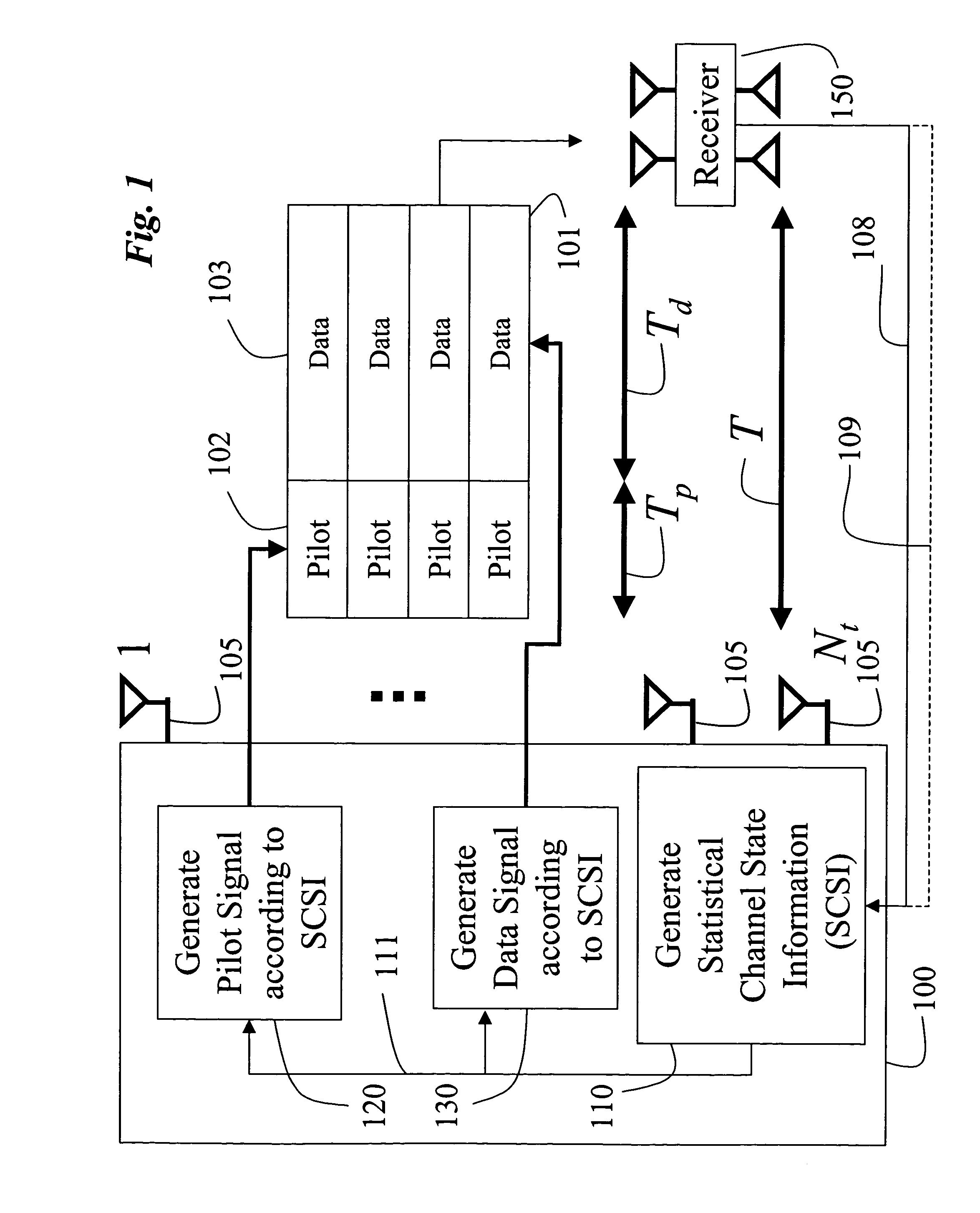Pilot and data signals for MIMO systems using channel statistics
a channel statistics and piloting technology, applied in multiplex communication, power management, wireless communication, etc., can solve the problems of reducing spectral efficiency, imperfect csir, impractical use of instantaneous csit in channels with small coherence intervals, etc., to simplify the complexity of the above numerical methods, improve data transmission rates, and improve the effect of spectral efficiency
- Summary
- Abstract
- Description
- Claims
- Application Information
AI Technical Summary
Benefits of technology
Problems solved by technology
Method used
Image
Examples
Embodiment Construction
[0022]System Structure
[0023]FIG. 1 is a transmitter 100 according to our invention for a multiple-input, multiple-output wireless communications system. The transmitter transmits a block of symbols 101 having a total duration T and a total power P. The block 101 includes pilot signals 102 having a duration Tp and power Pp, and data signals 103 having a duration Td and power Pd, such that T=Tp+Td, and P=Pd+Pd. In the block 101, each row corresponds to one of the Nt transmit antennas.
[0024]The transmitter 100 includes multiple (Nt) antennas 105 for transmitting the pilot and data signals 101. The system 100 includes means 110 for determining statistical channel state information (SCSI) 111. By statistical information, we mean that we do not know the instantaneous state of the channel at that time the signals 101 are transmitted, which would be ideal. Instead, we only know how the state behaves statistically, when observed over a relatively long duration of time.
[0025]The statistics ca...
PUM
 Login to View More
Login to View More Abstract
Description
Claims
Application Information
 Login to View More
Login to View More - R&D
- Intellectual Property
- Life Sciences
- Materials
- Tech Scout
- Unparalleled Data Quality
- Higher Quality Content
- 60% Fewer Hallucinations
Browse by: Latest US Patents, China's latest patents, Technical Efficacy Thesaurus, Application Domain, Technology Topic, Popular Technical Reports.
© 2025 PatSnap. All rights reserved.Legal|Privacy policy|Modern Slavery Act Transparency Statement|Sitemap|About US| Contact US: help@patsnap.com



